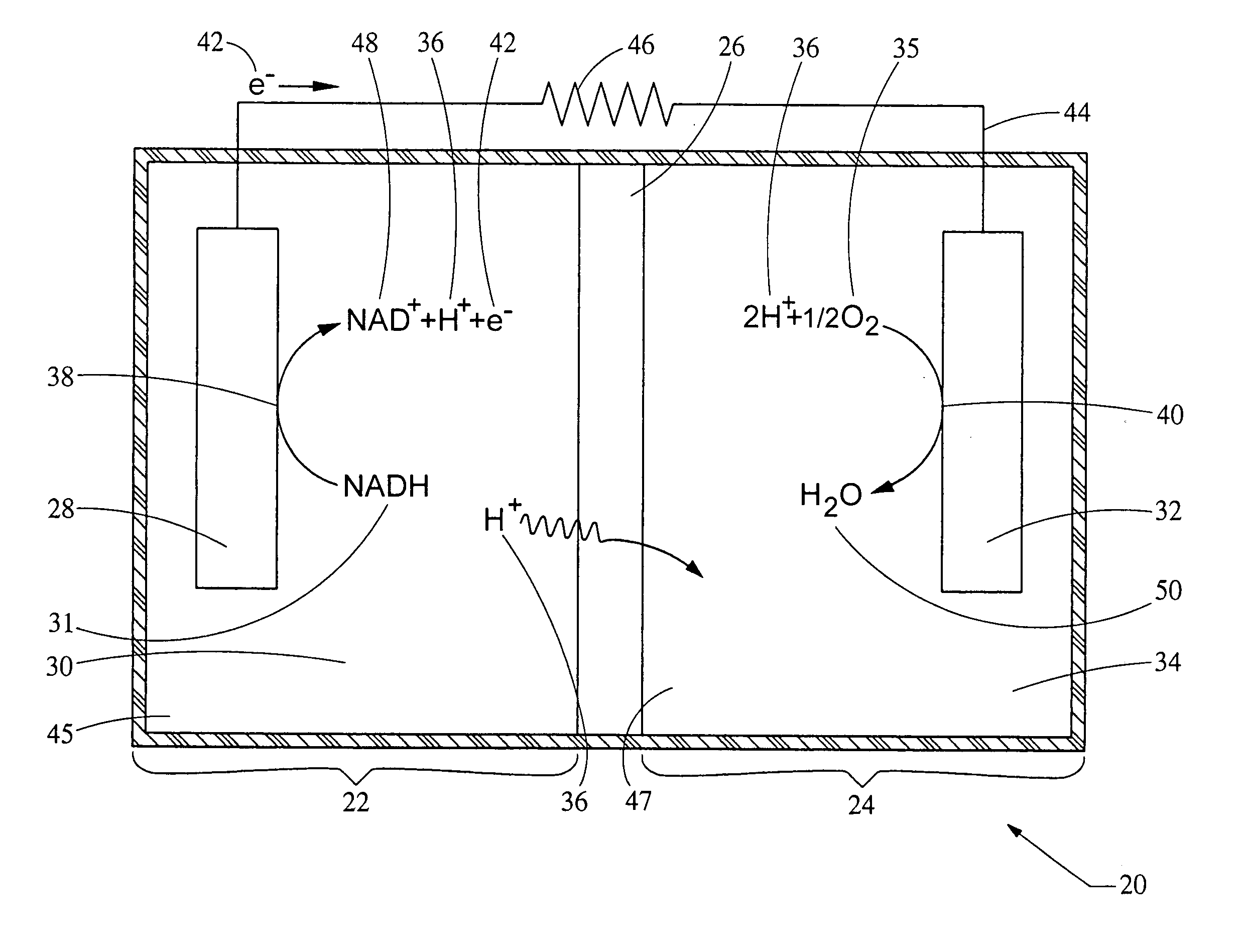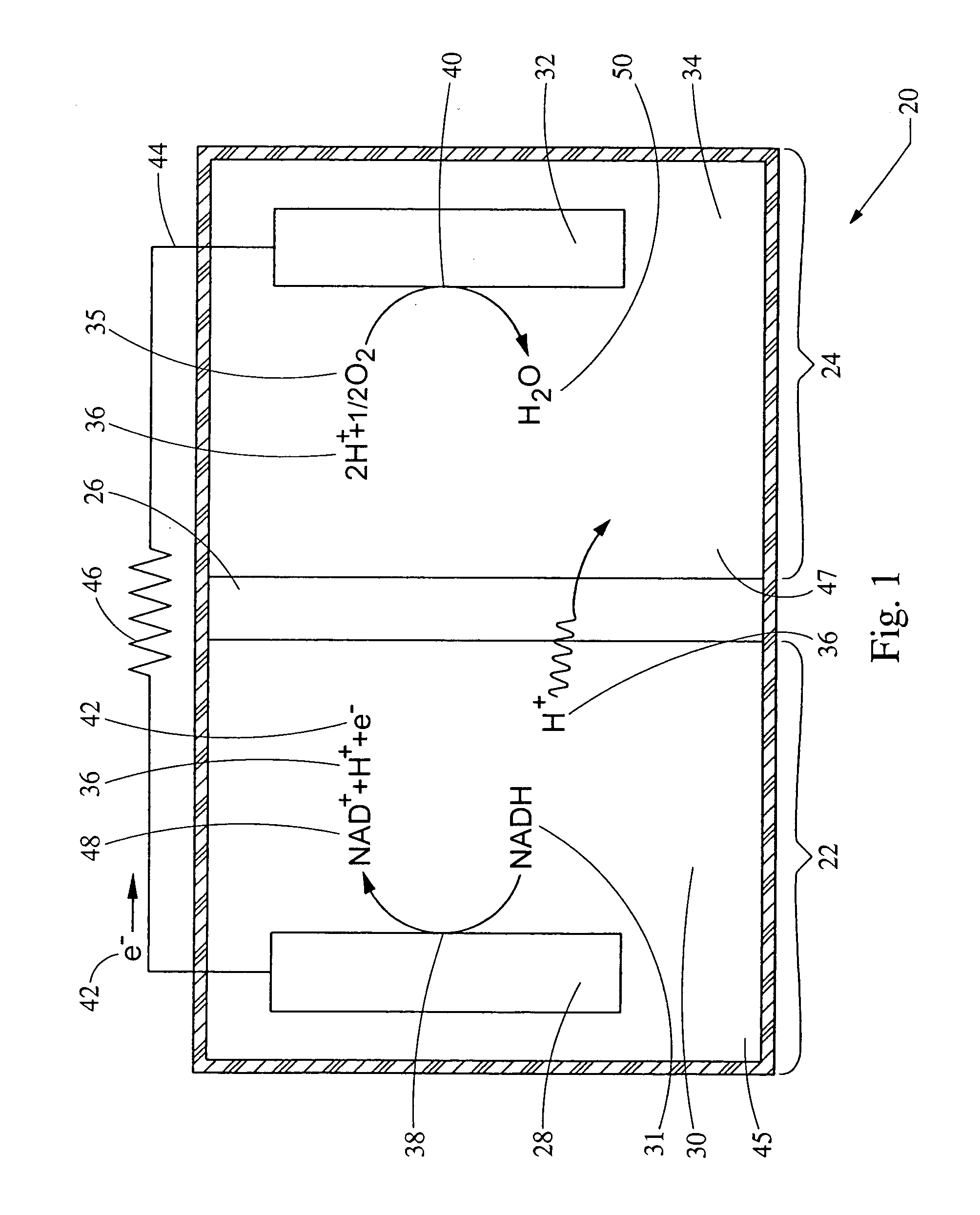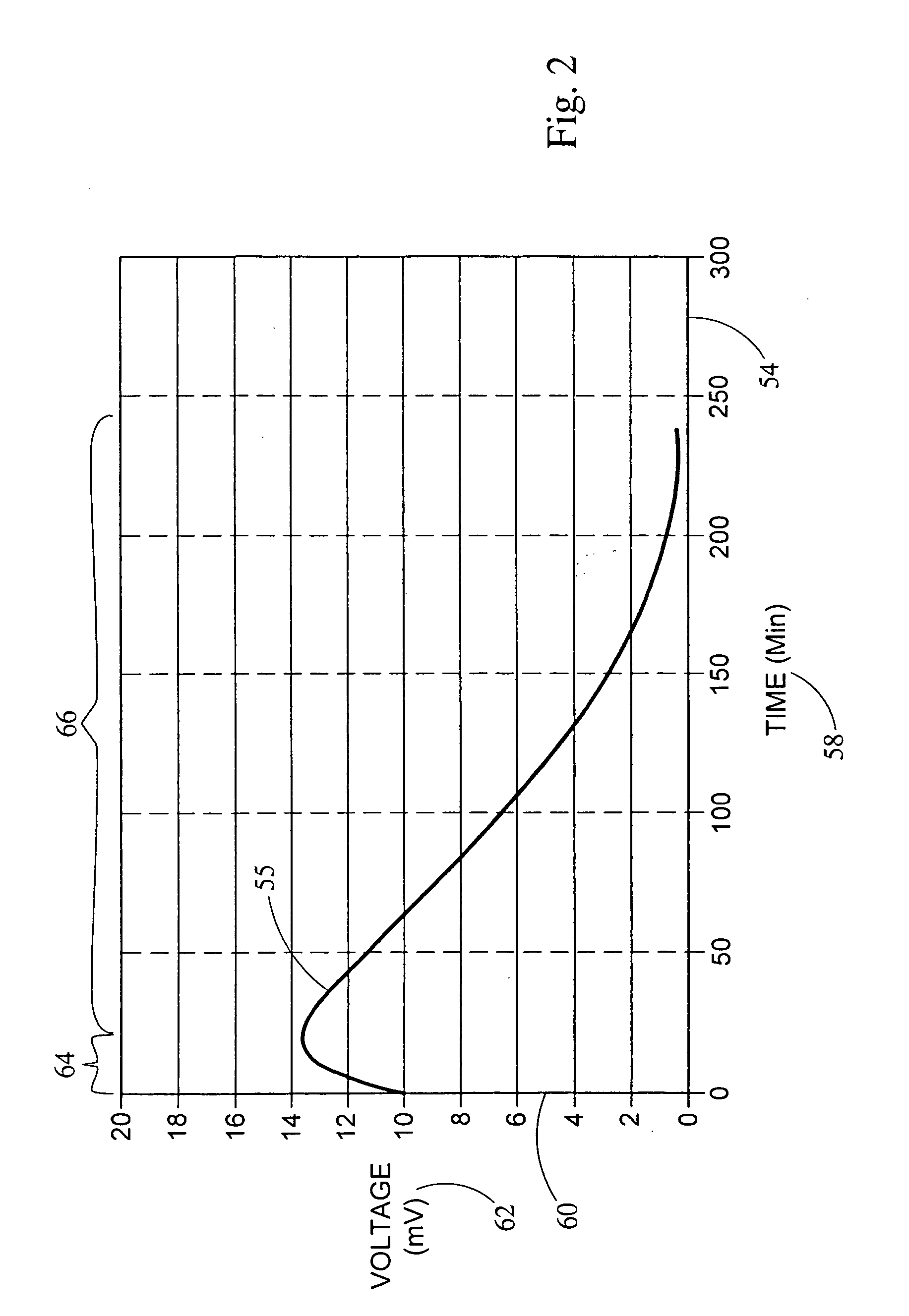Bio-battery
a bio-batteries and battery technology, applied in the field of bio-batteries, can solve the problems of laccase-dependent activity of laccase, laccase-based fuel cells do not produce a high power yield, and methanol fuel cells do not always work at high efficiency
- Summary
- Abstract
- Description
- Claims
- Application Information
AI Technical Summary
Benefits of technology
Problems solved by technology
Method used
Image
Examples
example 1
NADH Bio-Battery
[0051] This example provides for the generation of an electrical potential by the oxidation of NADH in an aqueous solution. The electrical potential is on the order of about 1 micro-amp per mg amounts of NADH added to the aqueous solution. A bio-battery was constructed according to FIG. 1, using a carbon anode 38, a platinum cathode 32, and a 0.051 mm NAFION® membrane 26 separating the first cell 22 from the second cell 24. The first cell 22 and the second cell 24 both contain a aqueous deionized water ionic transport medium. NADH was added to the first cell 22 to a concentration of about 1 mg / ml solution. The temperature of the aqueous solution was maintained at about 25° C., and the pH was between about 5.0 and 8.0. Upon adding NADH to the first cell 22, the electrical potential 55 of FIG. 2 was measured.
PUM
| Property | Measurement | Unit |
|---|---|---|
| pH | aaaaa | aaaaa |
| thickness | aaaaa | aaaaa |
| thicknesses | aaaaa | aaaaa |
Abstract
Description
Claims
Application Information
 Login to View More
Login to View More - R&D
- Intellectual Property
- Life Sciences
- Materials
- Tech Scout
- Unparalleled Data Quality
- Higher Quality Content
- 60% Fewer Hallucinations
Browse by: Latest US Patents, China's latest patents, Technical Efficacy Thesaurus, Application Domain, Technology Topic, Popular Technical Reports.
© 2025 PatSnap. All rights reserved.Legal|Privacy policy|Modern Slavery Act Transparency Statement|Sitemap|About US| Contact US: help@patsnap.com



